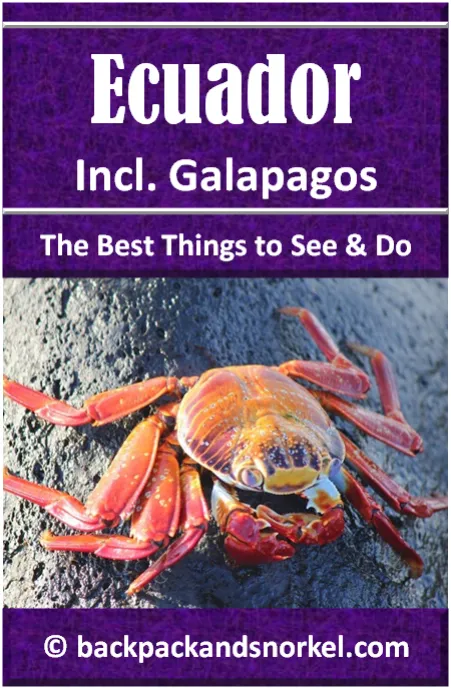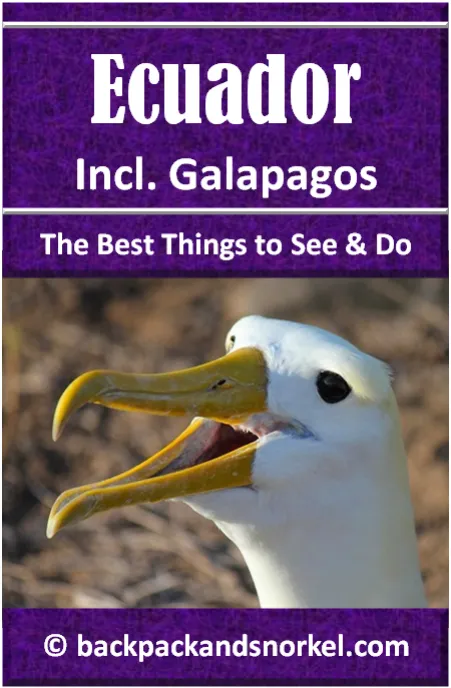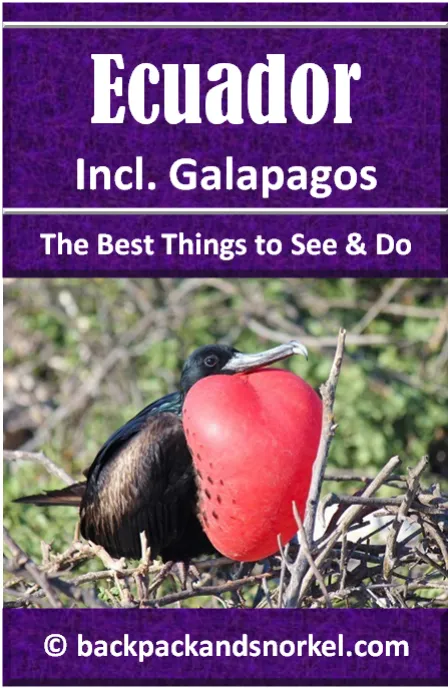Backpack and Snorkel Travel Guide for the Galapagos Islands - Galapagos Purple Travel Guide
This Backpack and Snorkel Travel Guide for the Galapagos Islands (Galapagos Purple Travel Guide) provides information about the best things to do in the Galapagos Islands and ensures that you will be Making Memorable Moments on a relaxing vacation in the Galapagos Islands.
The Galapagos Islands feature an amazing diversity of Animals, many Endemic, which are unusually tame due to lack of predation and many years of protection. This protection must continue to preserve the uniqueness of Galapagos for future generations.
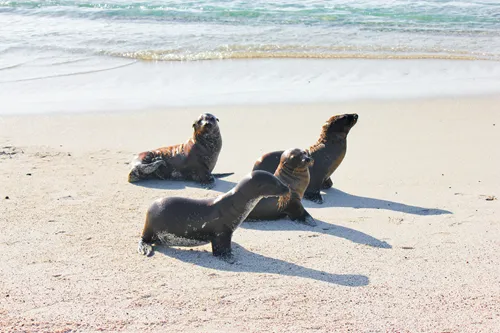
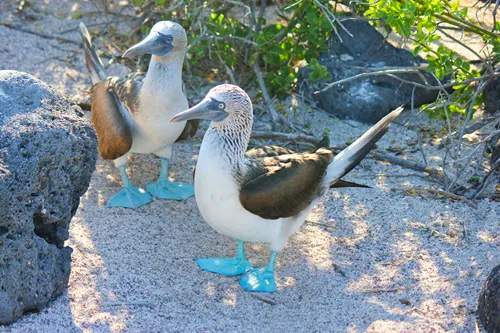
The Galapagos Islands feature an amazing diversity of Animals, many Endemic, which are unusually tame due to lack of predation and many years of protection. This protection must continue to preserve the uniqueness of Galapagos for future generations.
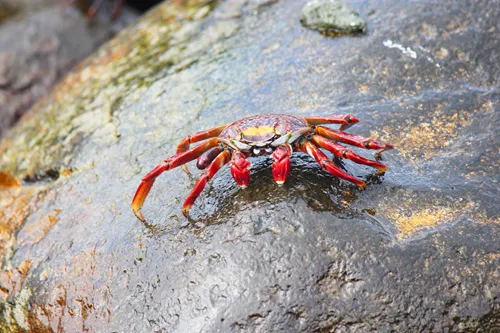
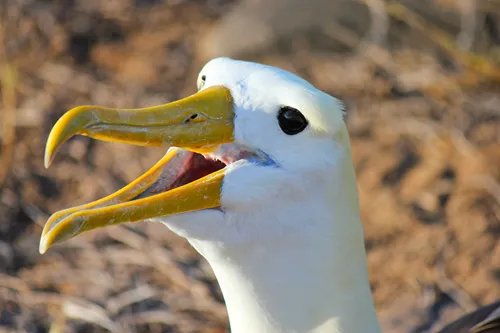
Wonderful 12-Day Itinerary of Ecuador and the Galapagos Islands
This 12 day itinerary allows enough time to explore the absolute highlights of Ecuador. Due to its compactness, it can be combined with other South American countries or act as a starting point to a more in-depth 3 or 4 week Ecuador experience.
Day |
Night |
|
Day 1 |
Arrive in Quito |
|
Day 2 |
Quitsato Mitad del Mundo; Otavalo Market; Cascadas de Peguche; Laguna de Cuicocha |
|
Day 3 |
Flight to Baltra (Galapagos); Galapagos Cruise: North Seymour |
Cruise Ship |
Day 4 |
Cruise Ship |
|
Day 5 |
Cruise Ship |
|
Day 6 |
Cruise Ship |
|
Day 7 |
Galapagos Cruise: Santa Cruz; transfer to Isabela; Puerto Villamil |
|
Day 8 |
||
Day 9 |
Flight to Quito; Quito (New Town) |
|
Day 10 |
||
Day 11 |
||
Day 12 |
TelefériQo; Depart Quito |
Days 3 to 9 of the Ecuador Tour: Six Perfect Days in the Galapagos Islands
Entrance requirements for the Galapagos Islands
One of the most important entry requirements is the National Park Fee. Upon arrival to the islands, a park officer will collect the National Park fee of $100 US - Children under the age of 12 pay $50. Cash only, no travelers’ checks or credit cards. Keep your park tax receipt in a safe place – you will need it.
The National Park entrance fee helps fund the maintenance of the parks and other national projects.
Import Regulations for the Galapagos Islands
At the airport, your bags will be inspected. This is not just the usual air safety inspection, but also an agricultural inspection that has the goal to avoid the introduction of harmful species to the Galapagos Islands.
You are not allowed to bring the following to the Galapagos Islands:
Plant life in form of Fruits, seeds, flowers or other live plants that could possibly be planted or carry diseases to the Islands.
Animals: NO PETS ALLOWED!

What is the Transit Control Card for the Galapagos Islands?
The Galapagos Transit Control Card (TCC) is an immigration control measure that is designed to limit immigration to the Galapagos archipelago. Every visitor, Ecuadorian or foreign person, must register and their arrival and departure are monitored.
How do I get the Transit Control Card for the Galapagos Islands?
You will need to go to the Governing Council of Galapagos counter before you check in for your Galapagos flight; there you need to show a flight reservation or boarding pass and a valid ID or Passport to get your card. You will need to show the card after arrival in the Galapagos. After returning to the mainland, you will need to return the card.
How much does the TCC cost for the Galapagos Islands
The cost is USD $20 per person. You can fill it out at the airport when you check in for your flight or online.
Why should I visit the Galapagos Islands
The Galapagos archipelago is unique in the world and an absolute must-see. Here, you can see beautifully colored birds, land animals and sea life – much of which only exists in the Galapagos archipelago – and you can get very close to them as they are not afraid of you. You can experience rocky volcanic terrain and deserted gorgeous white sand beaches and turquoise water and on most islands only you your tour group will be the only people on same island.
You can step in Charles Darwin’s footprints and try to comprehend how he understood the principles of natural selection and then formulated his Theory of Evolution.
How to best experience the Galapagos Islands?
To save money, many people fly to the Galapagos Islands and hop on day tours to see the few islands that can be reached on a day tour.
Guess what, they will be rightfully impressed. But unfortunately, they have only seen a tiny fraction of what makes the Galapagos Islands so unique as many of the major attractions are way beyond the reach of 1-day tours.
That's why we recommend to join a multi-day cruise.
There are many cruises from budget to luxury cruises and they differ in lengths.
Regardless if you book a budget or luxury cruise: they all go to the same destinations.
Only the mode of transportation differs.
Selecting the Galapagos cruise that is right for you
We decided to take a 5 day, 4 night budget cruise. There are expensive 10-day cruises that bring you to almost any island, but chances are that you will have lots of repeat experiences. Instead, we opted for a 5 day cruise and added two additional days to experience the local flair.
The ship that we selected was the Guantanamera. Unfortunately, the Guantanamera does not exist anymore, but there are other cruise ships that are similar in design and have similar itineraries.

Please be advised that routes of the cruise ships change almost every year as the Ecuadorian government issues permits and strictly limits the islands a ship can add to their itinerary and the number of visitors per island per day.
Description of a budget class Galapagos cruise ship
The Guantanamera was a budget cruise ship and we cruised on her in late April.



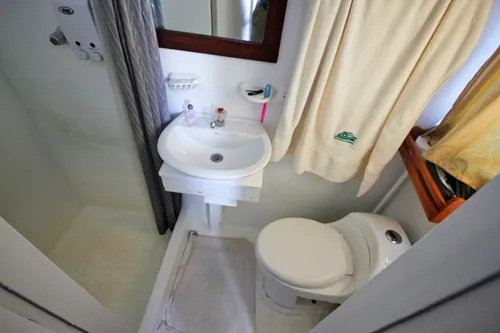
Tour guides are government approved and frequently change between cruise ships.
Walter was our licensed tour guide and this was his last cruise on the Guantanamera.
After our cruise he transferred to another boat.
Walter met us and most other passengers at the airport. The Guantanamera had space for 16 passengers (8 cabins) and 8 crew. Walter, who told us he had 30+ years experience in this job, spoke real good English and the rest of the crew spoke either little or no English.
On the ship, shoes were collected in 2 shoe boxes and everyone walked around barefoot. The upper deck had 6 beach chairs on a sun deck and a shaded general assembly area where Walter gave briefings every evening on the next day’s activities.
Five cabins were located on the intermediate deck. The cabin layout is from rear to front:
Left side: kitchen-cabins 6-7-8
Right side: dining room-cabins 4-5
The engine noise could be heard throughout the ship, but I assume that cabins 5 and 8 got the least of the noise as they were farthest away from the engine room. This is important to know as the ship did a fair amount of cruising overnight. Cabins 5 and 8 were, however, next to the motor that operates the anchor. Raising and lowering the anchor is a noisy operation.
All cabins had bunk beds with very firm mattresses.
Cabins on the lower deck had port holes and cabins on the intermediate deck had windows that could be opened (1 in the bedroom and 1 in the bathroom).
The bathroom had a shower (water at best luke warm, shower had shampoo and conditioner dispenser; no soap was provided; 3 towels provided), a small sink and a toilet. I estimate the size to be 3x7ft. There was so little space between the toilet and the sink that I had to sit on the toilet at an angle.
The cabins were tiny, but it does not really matter as we went there only to change clothes and to sleep. The size of cabin 8 was approx. 7 x 10ft. The room A/C overlapped the upper bed a bit. On the wall above every bed is a reading lamp.
There was 1 grounded double power outlet in the bedroom and one in the bathroom.
The cabins could only be locked from the inside. We and everyone else left the doors unlocked and opened the windows.
Snorkeling in the Galapagos Islands
There is a fair amount of snorkeling on the trip. Within a few days many on the cruise got sunburned on their backs and wore shirts for snorkeling. We strongly recommend wearing a rash guard as the sun is very intense and even water proof sun lotion washes off during the 45min snorkeling activities.
Rash guards typically come with an SPF 50 sunblock and dry easily.
There are 3 currents that come together at the Galapagos. Thus, the water temperature varies from 63F (17°C) of the Humboldt current to 77F (25°C).
While snorkeling gear is provided free of charge, wet suits can be rented for a charge ($7.50 per person per day).

Hiking in the Galapagos Islands
Walking on the islands is often over volcanic rock. Sport shoes are sufficient. For some of the wet landings, water shoes or sandals that can get wet are advisable.
Eating on the Galapagos cruise
The ship has its own cook. The cook on our cruise was well experienced and always had the food ready on time. The meals were buffet style and there were very few repetitions.
There was typically 1 meat or fish dish, rice, pasta, fruits, vegetables and deserts. Coffee, hot water and tea bags and chilled water were available all day.
After most activities, snacks such as cookies or potato chips or protein bars and fruit juice were available on the upper deck.
Taking photos and videos on the Galapagos cruise
You will probably take tons of photos. Make sure to bring a good camera with a zoom lens or a good optical zoom and plenty of storage for your photos. I strongly recommend to also bring a good underwater camera for the snorkeling trips.
The most important things that you need to pack for a Galapagos cruise
The most important item on you packing list should be a full bottle of sun blocker! We almost went through an entire 8 fl oz (237ml) bottle on our 5 day, 4 night cruise.
If possible wear a rash guard to prevent sunburn during snorkeling excursions.
We advise to wear a hat on the land tours.
Bring a good camera and camcorder and plenty of memory. If you enjoy snorkeling, also bring an underwater camera or a water tight camera holder and be advised that the touch screen of your mobile phone will not work under water.
Duration of Galapagos excursions
Land excursions were typically 90min whereas snorkeling as typically 45min.
The best time to visit the Galapagos Islands
In our opinion, April and May are the best months to visit the Galapagos Islands.
Swimming and snorkeling are good, no wetsuits are needed and animal life is abundant. Blue-footed boobies show their famous courtship dances and frigate birds display their bright red gular pouches.
But, to be honest, the whole year is a good time to visit the Galapagos Islands. It purely depends on your preference of what you want to see and do.
Please be advised that the naturally occurring climatic phenomenon El Niño has an impact on the climate and animal life of the Galapagos Islands. El Niño occurs on average every 5 years, but happens irregularly and can occur anywhere between every 2 to 7 years.
During an El Niño event, the nutrient-rich Humboldt Current does not reach the Galapagos waters, strong winds, heavy rains, and warmer ocean currents damage the fragile ecosystem of the Galapagos Islands.
Due to the lack of food, sea lions, sharks, fish, and birds search for food in places they typically avoid. Animals depending on fish and algae (Galapagos marine iguanas, blue-footed boobies, red-footed boobies, Galapagos penguins, flightless cormorants, etc.) tend to starve during that time.<
Due to the increased rainfall, plants on the islands thrive, and thus land iguanas, giant Galapagos tortoises and many land birds thrive.
If you are worried about visiting the Galapagos Islands during the rainy season, don’t worry. It typically rains at night and the sun burns off the clouds by 10am or 11am.
Here is an overview of the highlights of the Galapagos Islands by month:
January Galapagos Highlights |
|
February Galapagos Highlights |
|
March Galapagos Highlights |
|
April Galapagos Highlights |
|
May Galapagos Highlights |
|
June Galapagos Highlights |
|
July Galapagos Highlights |
|
August Galapagos Highlights |
|
September Galapagos Highlights |
|
October Galapagos Highlights |
|
November Galapagos Highlights |
|
December Galapagos Highlights |
|
Weather by Month in the Galapagos Islands, Ecuador
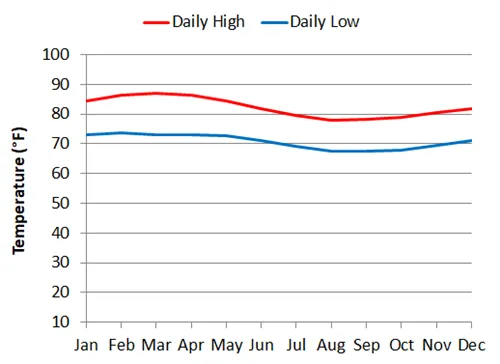
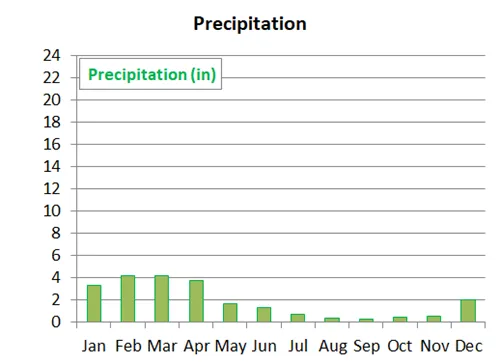
Weather in April in the Galapagos Islands
We had a thick cloud cover every morning, but the sun burned that away by mid-morning. Much of the day was clear blue sky. The clouds returned at sunset and made star gazing impossible. There was no rain at all except for a sprinkle on the last day at the Darwin station and on our Los Tuneles tour.
Detailed itinerary of our 5 day, 4 night budget Galapagos cruise
The map below shows the destinations on our cruise:
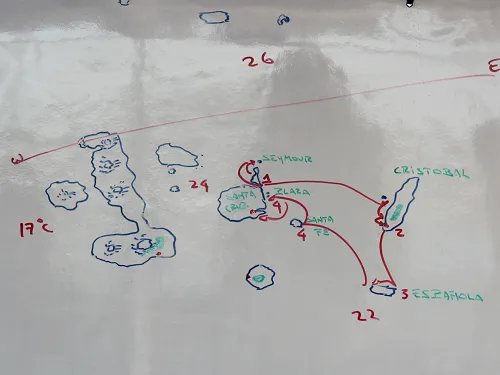
Day 3: from the Baltra airport to North Seymour Island – Island exploration and snorkeling
morning |
pick-up at the Baltra airport and transfer to the Guantanamera cruise ship |
noon |
lunch |
2pm |
North Seymour Island: dry landing, nature walk over rocky terrain and on the beach |
4pm |
North Seymour Island: optional snorkeling |
6pm |
dinner |
Walter, our tour guide, met us and most other passengers at the airport and we were then transported to the Guantanamera. Some passengers were already on board and others joined within the hour.
Morning: Boarding of the Guantanamera cruise ship

North Seymour Island in the Galapagos
North Seymour Island is a 0.7 sqmi (1.9 km2) flat island with a maximum elevation of 92 ft (28 m). It is named after Vice-Admiral Lord Hugh Seymour from the British Royal Navy.
The island is not of volcanic origin, but was created by seismic uplift.
North Seymour Island is covered by low, bushy vegetation and has large populations of blue-footed boobies, magnificent frigate birds and swallow-tailed gulls. The island is also home to some Galápagos land iguanas.
The nature walk follows a 1.2 mile (2 km) visitor trail over rocky terrain and on the beach.

2pm: North Seymour Island: dry landing, nature walk over rocky terrain and on the beach
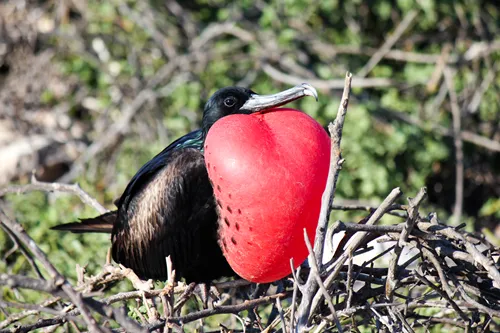

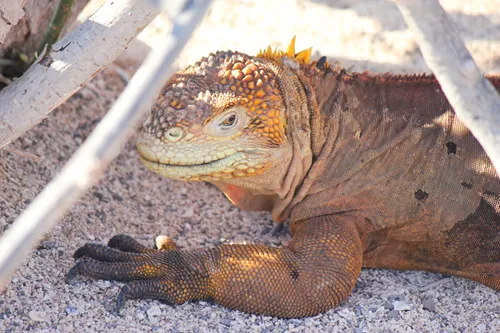

4pm: North Seymour Island: optional snorkeling

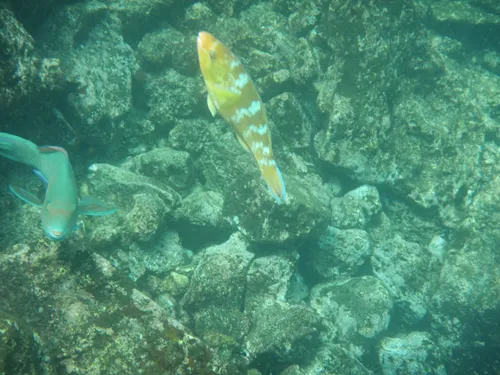
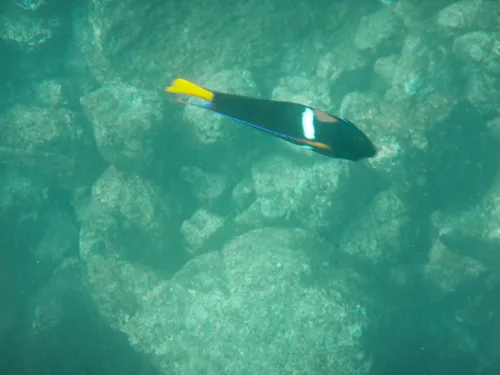

Day 4: San Cristobal Island and Puerto Baquerizo Moreno – Island exploration and snorkeling
San Cristobal Island is the easternmost island of the Galápagos archipelago, geologically one of the oldest, and also the most fertile of the archipelago.
It is named after San Cristóbal / St. Christopher, the patron saint of seafarers. The island is formed from three or four fused extinct volcanoes.
The size is 215 sqmi (558 km2) and the highest elevation is 2,400 ft (730 m).
San Cristobal Island is where Darwin first went ashore in 1835 and it has the oldest permanent settlement in the Galapagos with a population of about 6,000 people, which makes it the second most populated island of the Galapagos after Santa Cruz Island.
San Cristobal Island is home of capital of the Galapagos, Puerto Baquerizo Moreno.
Among the many animals on San Cristobal Island are blue and red footed boobies, frigate birds, Galápagos sea lions, Galápagos tortoises, marine iguanas, swallow-tailed gulls. Dolphins, sharks, rays and lobsters can be found in the waters surrounding the island.
Two popular snorkeling and diving sites at San Cristobal Island are Kicker Rock (León Dormido) (map, reviews) and Isla Lobos (Sea Lion Island).
Kicker Rock is what remains of a lava cone that is now split in two and Isla Lobos is a small island with houses a nesting site for blue-footed boobies.
6:30am: San Cristobal Island - snorkeling around Kicker Rock
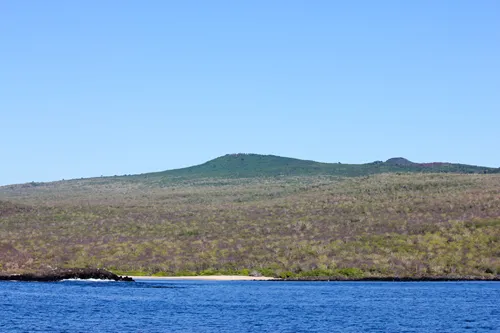

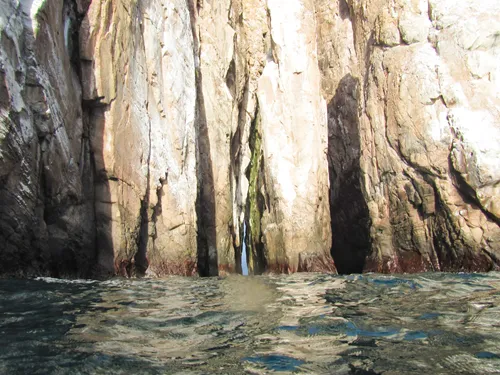
9:30am: San Cristobal Island - Cerra Brujo: wet landing and nature walk and snorkeling




2:15pm: San Cristobal Island - Isla Lobos: snorkeling


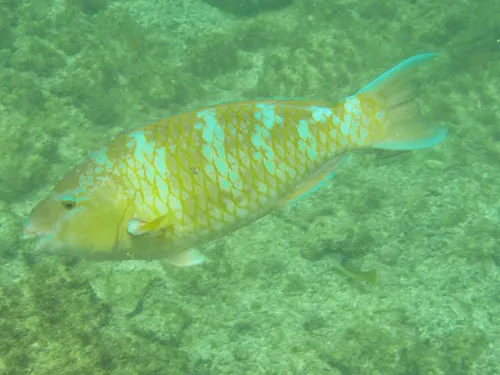
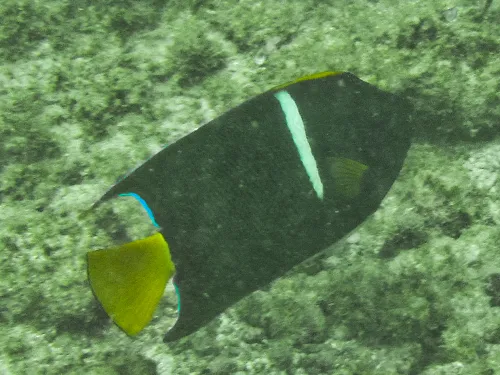
3:45pm: San Cristobal Island - Isla Lobos: dry landing and nature walk over mostly rocky terrain

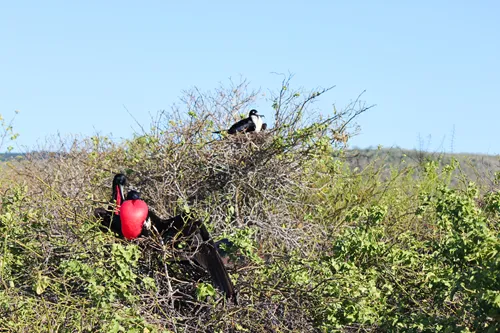


5:00pm: San Cristobal Island: optional snorkeling
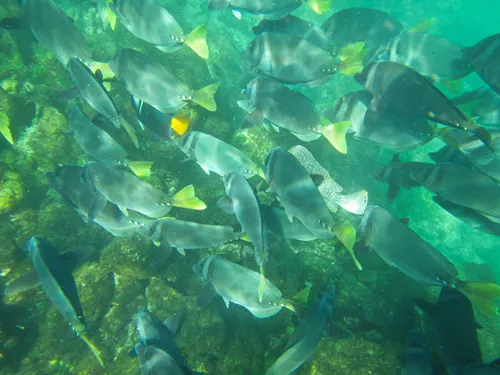


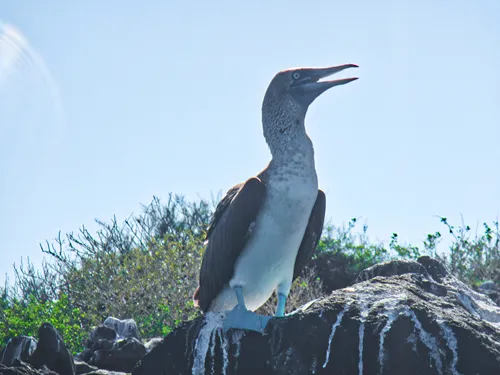
7:30pm: optional dry landing at Puerto Baquerizo Moreno (capital of Galapagos), 1h sightseeing (unguided)

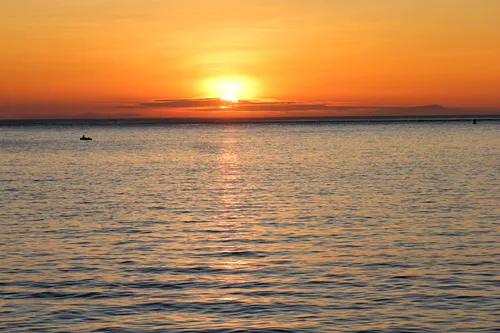

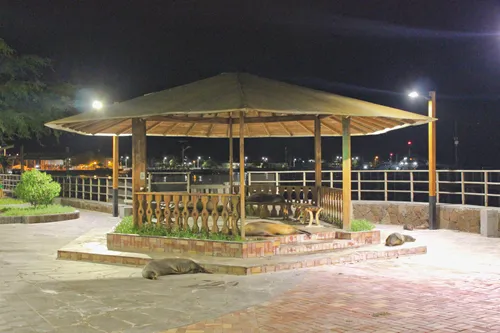
Day 5: Espanola Island – Island exploration and snorkeling
7:00am |
breakfast |
8:00am |
wet landing at Gardner Bay (map, reviews) on Espanola Island, nature walk |
10:30am |
snorkeling |
noon |
lunch |
3:00pm |
dry landing at Suarez Point on Espanola Island, nature walk over rocky terrain |
6:45pm |
dinner |
Espanola Island
Espanola Island is the southernmost and driest island of the Galapagos archipelago. With an estimated age of 4 million years, it is also one of the oldest.
Espanola Island 23 sqmi (60 km2) in size and the highest elevation is 675 ft (206m). The island is flat originating from a shield volcano in the center of the island.
Espanola Island is famous for its colony of waved albatrosses. As a matter of fact, almost the entire world population of waved albatrosses breeds here. The island also hosts lots of blue-footed boobies.
Gardner Bay (Bahia Gardner) is a hotspot for sea lion watching on a beautiful beach.
Suarez Point (Punta Suarez) is famous for bird watching, especially the massive waved albatross colony. Other highlights are the stunning blowhole which shoots water up into the air.
8:00am: wet landing at Gardner Bay on Espanola Island, nature walk
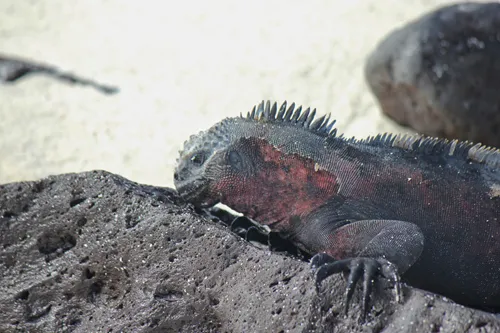

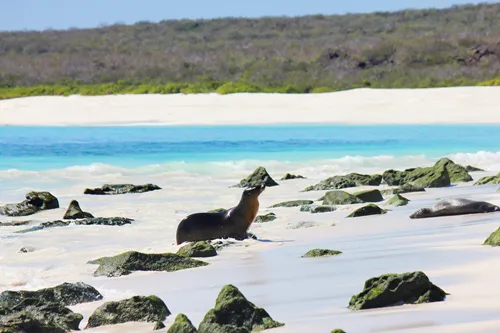

10:30am: snorkeling





3pm: dry landing at Suarez Point on Espanola Island, nature walk over rocky terrain



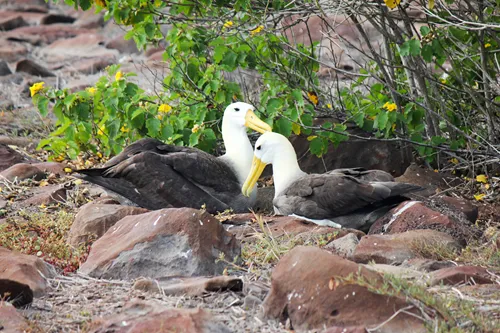
Day 6: Santa Fe Island, South Plaza Island and Puerto Ayora – Island exploration and snorkeling
6:30am |
breakfast |
7:30am |
wet landing at Santa Fe Island and nature walk |
9:00am |
snorkeling |
noon |
lunch |
2:00pm |
dry landing on South Plaza Island and nature walk |
6:00pm |
dinner |
7:00pm |
optional dry landing at Puerto Ayora, 1h sightseeing (unguided) |
Santa Fe Island
Santa Fe Island is about 4 million years old, which makes it one of the oldest islands in the Galapagos archipelago.
The island is 9.3 sqmi (24 km2) in size, fairly flat, and has two trails starting at Barrington Bay beach, where visitors can see large numbers of sea lions.
The endemic Santa Fe tortoise was hunted to extinction in the 19th century and the island was tortoise free for 150 years. Between 2015 and 2021 731 of the genetically closest Española tortoises were introduced to Santa Fe with the reasoning that tortoises are important for the island ecosystem, especially as seed dispersers.
South Plaza Island
South Plaza Island is a small flat island of the size 0.05 sqmi (0.13 km2) and a maximum elevation of 75 ft (23 m). It was formed by lava that was up streaming from the bottom of the ocean.
South Plaza Island is known for its extraordinarily colorful flora and it is home to a large number of species.
The Sesuvium ground vegetation (some call it Galapagos carpetweed) is orange and purple in the dry season and green during the rainy season.
Noteworthy is the large colony of Galápagos land iguanas. Only on South Plaza Island does the breeding season of the Galapagos land iguanas overlap with that of the marine iguana, which gives rise to a unique population of sterile, grey-toned hybrid iguanas.
7:30am: wet landing at Santa Fe Island and nature walk
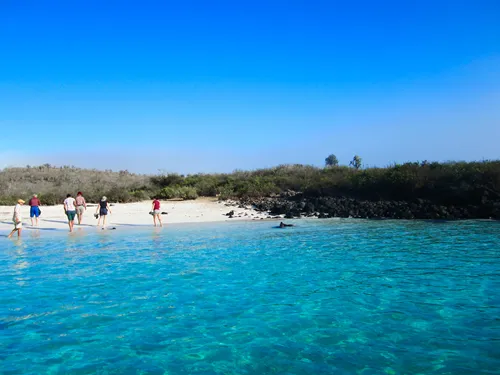

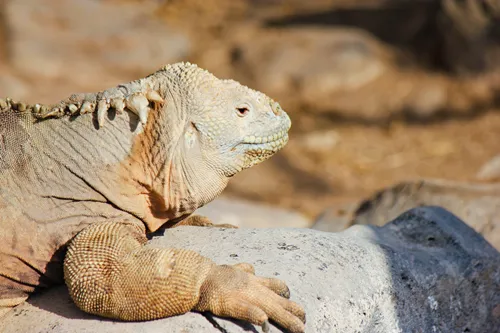
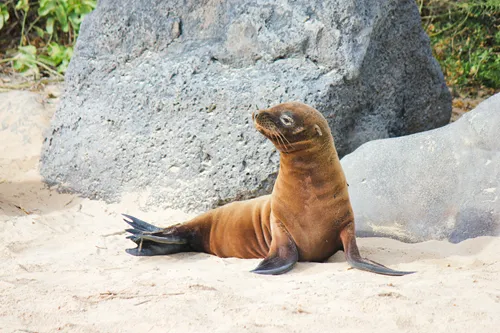
9:00am: snorkeling
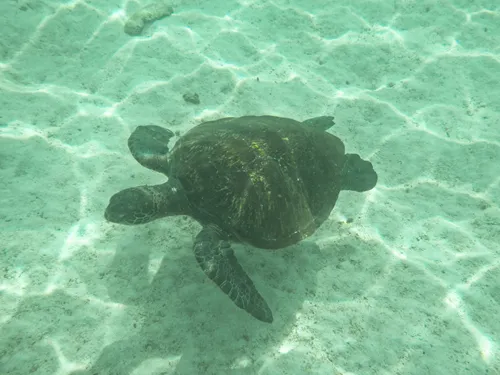
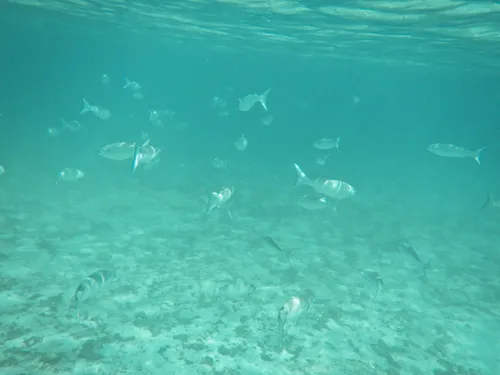
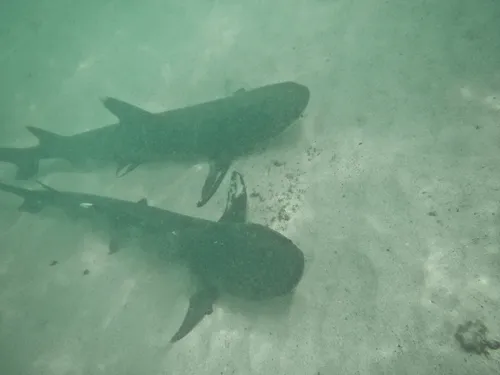

2pm: dry landing on South Plaza Island and nature walk
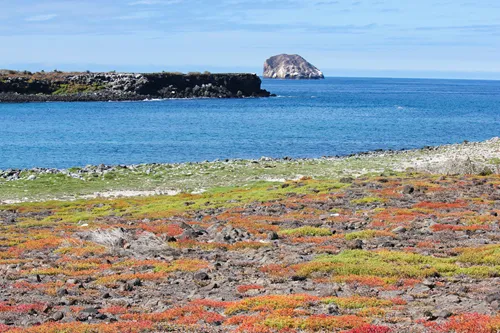
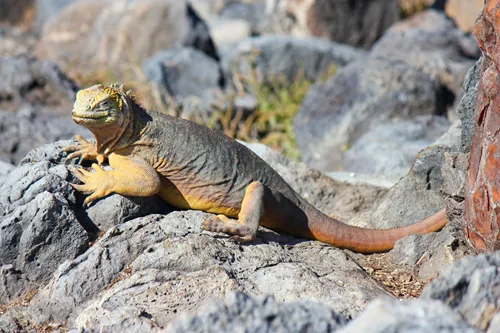
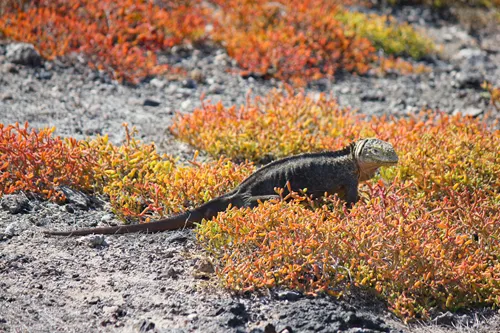

7:00pm: optional dry landing at Puerto Ayora, 1h sightseeing (unguided)
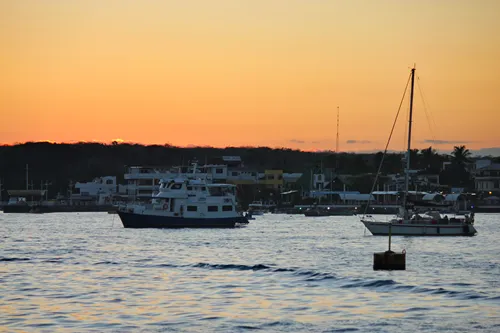



Day 7: Santa Cruz Island exploration, Puerto Ayora and Puerto Villamil
Santa Cruz Island
Santa Cruz Island is the second largest island of the Galapagos archipelago with a size of 381 sqmi (986 km2) and a maximum elevation of 2,835 ft (864 m). Its main town of Puerto Ayora is the most populous town in the Galapagos with a population of 12,000 people. 6,000 more people live in small communities elsewhere on the island.
Darwin station
The Charles Darwin Research Station CDRS (Estación Científica Charles Darwin, ECCD) is a biological research station that is operated by the Charles Darwin Foundation. The main location is in Puerto Ayora, but it has satellite offices on Isabela Island and San Cristobal Island.
Its main purpose is to conduct scientific research and environmental education for conservation in the Galapagos Islands. At the Darwin station, there is a team of over a hundred scientists, educators, volunteers, research students, and support staff from all over the world.
If you have not been lucky to see any giant tortoises on your Galapagos cruise, the Darwin station is you best opportunity.
There are lots of other things to do on Santa Cruz island.
Isabela Island
Named after named after Queen Isabella I of Castile, Isabela Island is the largest of the Galapagos islands with an area of 1,771 sqmi (4586 km2) and the highest elevation is 5,600 ft (1707 m). It is shaped like a seahorse and is approx. 62 miles (100 km) long.
At an age of 1 million years, Islabela Island is one of the youngest islands in the Galapagos archipelago.
The island was formed by the merger of six shield volcanoes of which five are still active. This makes Isabela Island one of the most volcanically active places on earth.
Two of the volcanoes, the dormant Volcan Ecuador and Volcan Wolf (the island's highest), lie directly on the equator.
Isabela has more wild tortoises than all the other islands. Due to the island’s large size and the tortoises’ inability to cross lava flows, several different tortoise sub-species have developed.
Islabela Island was the only place where we saw Galapagos penguins.
Ferry to Puerto Villamil
You can get here with the inter-island ferry. Tickets can be purchased at one of the many travel agencies in town or online.
Puerto Villamil
Puerto Villamil is a small port village in Isabela Island. The majority of the 2,200 people on Isabela live here. Most people work in fishing, agriculture or tourism and the Ecuadorian government is trying to push them stronger into tourism to preserve the natural resources.
The main attractions are:
Rancho Primicias - Giant Tortoise Reserve
Centro de Crianza Tortugas Gigantes Arnaldo Tupiza Chamaidan
Poza de los Flamingos – flamingo lake
Iglesia Cristo Salvador
Boardwalk (Camino al Centro de crianza de tortugas gigantes)
Snorkeling at Concha de Perla
Las Tintoreras
Muro de las Lágrimas (Wall of Tears)
Day or half day trips to Los Tuneles
Rancho Primicias - Giant Tortoise Reserve
Rancho Primicias (Giant Tortoise Reserve) is a giant tortoise farm in which the animals roam freely. There is also a 1312 ft (400 m) lava tunnel that you can walk through.
You can walk the trails by yourself, but it is best to hire a guide or come here as part of an organized tour.
If you come by yourself, the best option is to come by taxi as the next bus stop is far away. The taxi driver can also drop you off at the lava tunnel.
Besides the trails with the tortoises, Rancho Primicias has a gift shop, tortoise shell exhibit, onsite restaurant and they sell their own coffee.
Centro de Crianza Tortugas Gigantes Arnaldo Tupiza Chamaidan
Centro de Crianza Tortugas Gigantes Arnaldo Tupiza Chamaidan has a tortoise breeding station and displays lots of young tortoises. The juveniles are separated by age groups and typically hang closely together. Goal of the center is to care for rescued tortoises and to release able tortoises back into the wild.
You can either get here by bike or taxi or walk the boardwalk from town to the center at the end of the boardwalk.
Poza de los Flamingos – flamingo lake
Poza de los Flamingos – flamingo lake is a short walk from town or on your way if you ride a bike or taxi to Centro de Crianza Tortugas Gigantes Arnaldo Tupiza Chamaidan. The lake is frequented by pink flamingoes year-round and your best bet to see these beautiful birds in the Galapagos Islands.
7:45am: dry landing and walk to giant tortoise breeding center/Darwin station

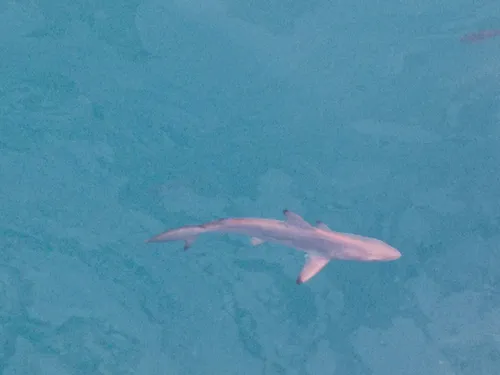
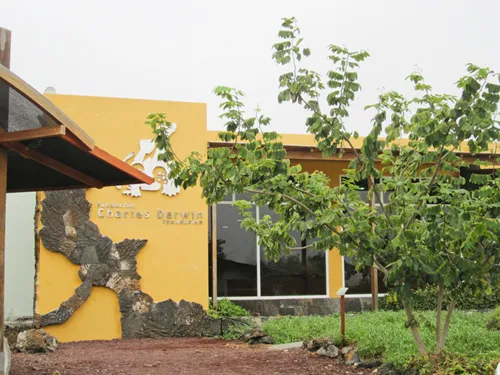

10:30am: taxi to Rancho Primicias - Giant Tortoise Reserve


pm: Centro de Crianza Tortugas Gigantes Arnaldo Tupiza Chamaidan
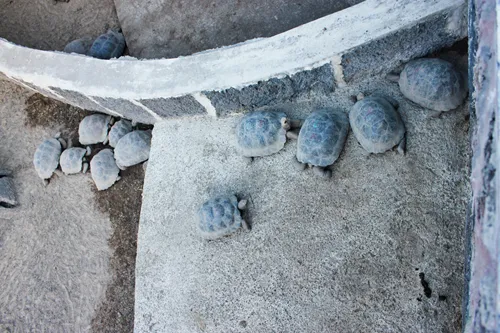
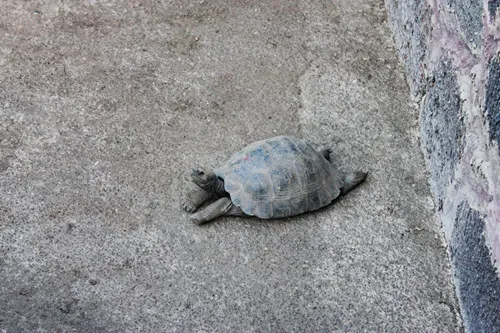
pm: Poza de los Flamingos – flamingo lake

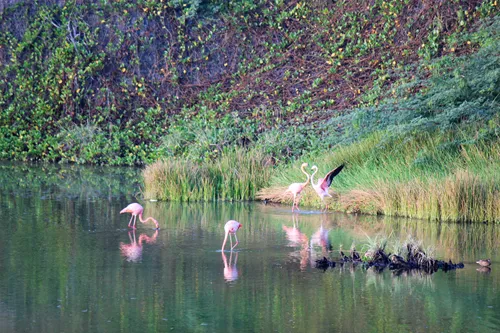

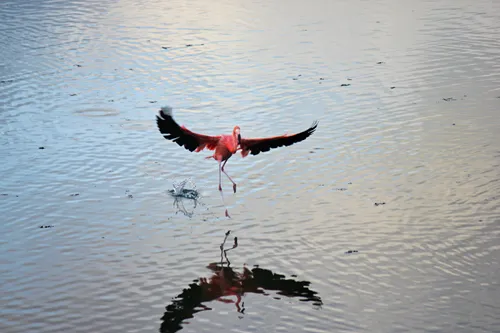
pm: evening on the beach
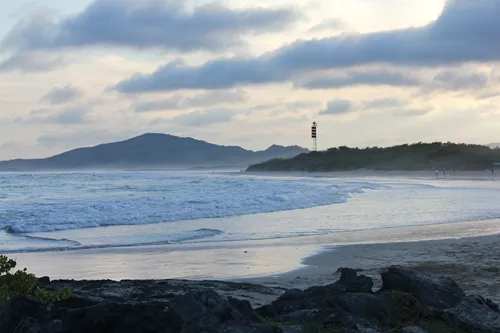

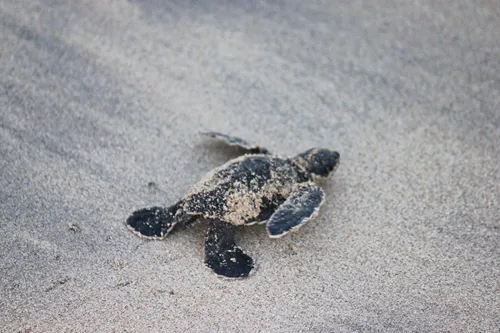
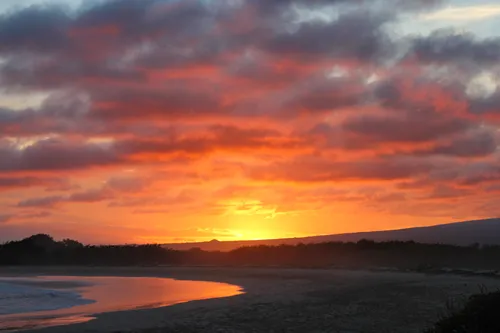

Day 8: Boat tour to Los Tuneles and transfer to Santa Cruz Island
am |
Boat tour to Los Tuneles |
am |
Beach |
pm |
ferry to Puerto Ayora on Santa Cruz Island |
pm |
La Calle de Los Kioskos (Food street) |
Los Tuneles
Los Tuneles are tunnels formed by lava flows under the sea. They were named by local fishermen who dived here to catch lobsters.
Above water are natural lava bridges and arches above that were formed by cooling lava after an eruption of Volcano Cerro Azul.
At Los Tuneles, snorkeling is amazing and there is even an opportunity to take a short walk on the lava rocks.
There are different tour operators that offer Los Tuneles tours. We used Rosedelco Tours.
This excursion starts with a 45 min boat ride to Islote La Unión (Roca Union, Bird Rock) a bird roc with various boobies and pelicans in the middle of the ocean and then continues on to Los Tuneles.
Unfortunately, during the boat ride, the weather declined and the waves got higher, so that Los Tuneles became inaccessible. The crew then decided to backtrack a bit and bring us to another location with good snorkeling that was easier to access during this weather. Unfortunately, I don’t know where they brought us.
Puerto Ayora: La Calle de Los Kioskos (Food street)
La Calle de Los Kioskos (Food street) is a street (Charles Binford) that transforms every evening into an outdoor food street with multiple vendors and restaurants setting up dining areas in the street. This is a good opportunity to try various local foods and fresh seafood.
I have heard rumors that the street was torn up during the pandemic – so ask your hotel if the food street is active again.
Ferry to Puerto Ayora
You can get here with the inter-island ferry. Tickets can be purchased at one of the many travel agencies in town or online.
am: Boat tour to Los Tuneles
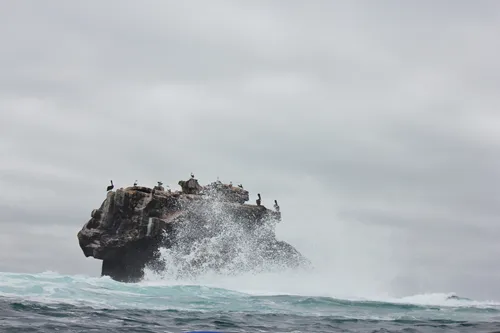

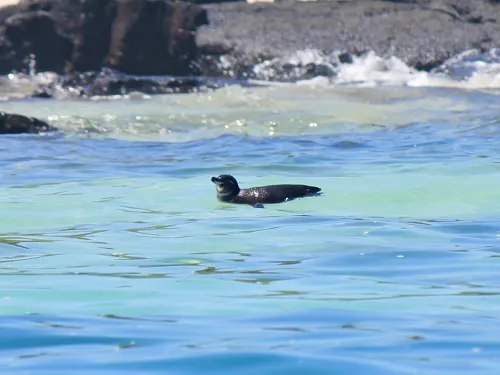
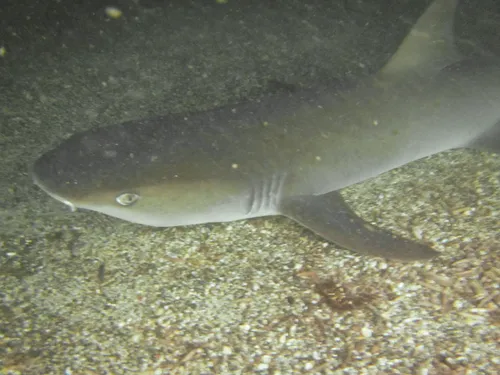
am: Beach
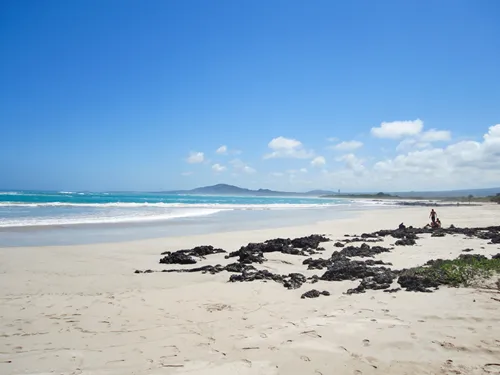
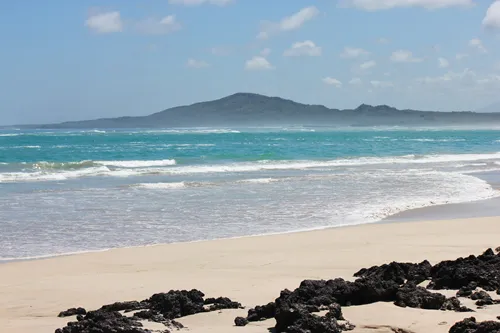
pm: La Calle de Los Kioskos (Food street)

Day 9: Taxi to the Baltra airport and flight to Quito
am |
Taxi to the Baltra airport and flight to Quito |


Hotels in the Galapagos Islands
Sun Island hostel in Puerto Villamil on Isla Isabela Island
We stayed in this small hotel with only 3 rooms for 1 night. The owner spoke very little English and we used the google translate app to communicate with her. We had the blue footed boobie room, which is the mid-level room. There is no elevator and you will need to carry up your luggage via a narrow staircase. The building has a roof terrace where you can see the ocean over 2 rows of houses.
The room was clean and had a kitchenette, but no pots, pans or utensils.
There was a fridge with a complimentary pot of water. The room was clean, had 2 beds and an efficient and quiet A/C.
One of the owners was in the office when we arrived. After we realized that she forgot to give us the wifi password, we went to the office which was locked. We tried to call the main hotel number and never reached anyone. Luckily we met a lady who had rented the room below us and she gave us the wifi password. Long story short: It is impossible to reach the owners if they are not in the office and they appear to be barely ever at the office. We did not do it, but you may want to tell the owners when you will check in and out and maybe ask them for their cell phone number.
As a notable exception to all the other hotels we had stayed in Ecuador, we paid the owners at the time when we checked out.
The hotel is directly on the main road parallel to the ocean close to all the restaurants.
Breakfast was served at a nearby restaurant which opens at 6:30am. Make sure to mention that you are from the Sun Island hostal so that you don’t have to pay for it but be aware that they did not speak English at the restaurant.
Pt. Villamil is a small 3,000 soul community with dirt roads and only 3 main roads. It has 2 supermarkets and a beautiful 2 mile (3km) long beach with very fine sand. As this is a very small community, there was no data signal for our cell phones. However, the hotels and restaurants offered free wifi.
The pier is a bit of a walk and so is the flamingo lagoon. The lagoon behind the hotel had barely any flamingoes when we were there.
On the walk to the flamingo lagoon, make sure to stop by the giant tortoise breeding center. You will see different tortoise species and also baby tortoises. The interpretive center is also worth a few minutes.
Long story short: The hotel is located near the heart of town and close to the beach. I can recommend this hotel, but you need to be aware that it may be difficult to get ahold of the owners.

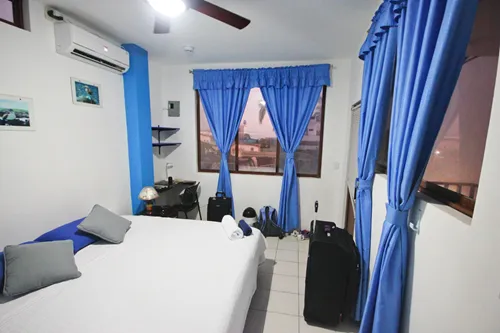


Hotel Coloma Galapagos on in Puerto Ayora on Isla Santa Cruz Island
We were greeted by the very friendly owner at check-in for our one-night stay. She spoke some English and gave us the Santa Cruz room (I believe it was room 8).
The room had 2 beds and was very clean. The A/C was efficient and quiet.
We told her that we only stayed for 1 night and had to leave for the airport the next morning at 6:15am (breakfast starts at 6:30am).
The next morning, she greeted us at 6:15am and gave us a zip-lock bag with 2 pears, 2 granola bars and 2 fruit juices. Thank you very much!
The hotel is located on a quiet side street but close to many restaurants, stores etc. It is also only a few blocks away from a street which turns into a food street in the evening. It is also only a few blocks away from the pier.
Long story short: This is a nice hotel with a super friendly owner. It is very affordable as it is not located in a prime location, but it is in short walking distance to everything. I wish we would have stayed here longer and I absolutely recommend it.



Author: Rudy at Backpack and Snorkel
Bio: Owner of Backpack and Snorkel Travel Guides. We create in-depth guides to help you plan unforgettable vacations around the world.
Other popular Purple Travel Guides you may be interested in:
Like this Backpack and Snorkel Purple Travel Guide? Pin these for later:
